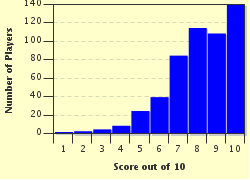Quiz Answer Key and Fun Facts
1. Bali, Indonesia has a wide variety of textiles. For the Balinese the "poleng" is a significant fabric, and is used on idols in the temples, significant rocks and trees, and by the people for special religious ceremonies. What is the pattern of the "poleng"?
2. This hand printed fabric technique is very popular in Indonesia, Malaysia, Singapore, Brunei, Azerbaijan, Thailand and China. It is printed with the use of melted wax. What technique is this?
3. This dyeing method has been around for centuries, but it reached new heights of popularity in the 1960s with the hippy movement. What dyeing method is it
4. The Irish are known for having healthy cottage industries and handcrafts. There is Waterford Crystal, Spode porcelain and this healthy natural fabric industry. What is it?
5. There is a rich fabric, usually with ornamental features, that has a relief pattern. It is made on a loom using a supplemental (extra) weft. This process has been around for centuries and has been associated with China, Japan, Byzantine and in modern times with France and Italy. What fabric is it?
6. This cotton fabric was a fad for a short period in the 1960s and 1970s. Usually it was striped or chequered, and made into light garments, especially for the British market. The way the fabric is woven makes some of the threads bunch up. What is this fabric called?
7. This process has many applications, not just fabric printing, and one could say that its popularity was increased by Andy Warhol's use of the process. What type of printing is it?
8. First thought to have been made in the early 1910s and further developed (and trademarked) in the 1930s, this distinctively printed item became very popular with tourists, and was a definite hit with surfers. Even Elvis Presley has worn it. What iconic clothing article is it?
9. The cotton plant botanically called "Gossypium barbadense" or "Gossypium hirsutum", now commonly referred to as "Egyptian" cotton is not actually a native of Egypt. What continent is it a native of?
10. This fabric and pattern is linked with Scotland, Scottish clans as well as with the military. What is it?
Source: Author
ClaudiaCat
This quiz was reviewed by FunTrivia editor
looney_tunes before going online.
Any errors found in FunTrivia content are routinely corrected through our feedback system.


